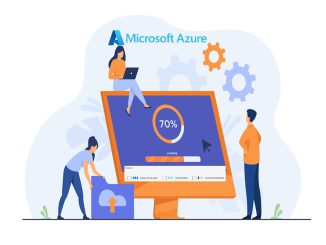
Microsoft Azure, being a constantly evolving, updating and changing environment, makes it difficult to sometimes follow all that happens around it. I will try to condense some of the Azure Announcements based on status – generally available, preview or update features.
Be aware that generally available features/updates might incur costs. Anything that is part of a public preview, does not incur any costs, but also does not have Service-Level Agreement (SLA) attached to it.
Past articles:
Azure Announcements (December 2022)
Microsoft Ignite Announcements (October 2022)
Azure announcements (September 2022)
Azure announcements (August 2022)
Azure Announcements (July 2022)
Azure Announcements (June 2022)
Blogs
General availability of Azure OpenAI Service expands access to large, advanced AI models with added enterprise benefits
Large language models are quickly becoming an essential platform for people to innovate, apply AI to solve big problems, and imagine what’s possible. Today, we are excited to announce the general availability of Azure OpenAI Service as part of Microsoft’s continued commitment to democratizing AI, and ongoing partnership with OpenAI.
With Azure OpenAI Service now generally available, more businesses can apply for access to the most advanced AI models in the world—including GPT-3.5, Codex, and DALL•E 2—backed by the trusted enterprise-grade capabilities and AI-optimized infrastructure of Microsoft Azure, to create cutting-edge applications. Customers will also be able to access ChatGPT—a fine-tuned version of GPT-3.5 that has been trained and runs inference on Azure AI infrastructure—through Azure OpenAI Service soon.

Additional information:
Link to blog
Learn more about Azure OpenAI Service and more about all the latest enhancements.
Apply for access to Azure OpenAI Service
Quickstart: how to get started generating text
Read the blog: AI and the need for purpose-built cloud infrastructure
Tips on using the service: Getting started with Azure OpenAI
General Availability Announcements
Apache log4J2 sink to Azure Data Explorer
Azure Data Explorer(ADX/Kusto) now supports ingestion of data from log4j with the release of our new Log4J2 sink. Log4j is a popular logging framework for Java applications maintained by the Apache Foundation. Log4j allows developers to control which log statements are output with arbitrary granularity. It is based on the logger’s name, logger level, and message pattern.
This sink allows you to easily stream your log data to Azure Data Explorer. There you can analyze, visualize, and alert on your logs in real time. With the Log4J2 sink, you can take advantage of ADX’s powerful querying and ingestion capabilities. This will enable gaining insights into your logs and detect issues before they become problems.
Additional information:
General availability: Apache log4J2 sink to Azure Data Explorer | Azure Blog and Updates | Microsoft Azure
Getting started with Apache Log4j and Azure Data Explorer | Microsoft Learn
Azure Sphere support for European Data Boundary
In keeping with Microsoft’s mission to process and store EU data exclusively within the EU (see EU Data Boundary for the Microsoft Cloud), the Azure Sphere Security Service now enables EU customers to process and store image files and device crash dump files within the EU as desired. The new Regional Data Boundary setting is an optional parameter. It can be used with the azsphere image and azsphere device-group commands.
Additional information:
Azure Sphere CLI device-group command | Microsoft Learn
Azure Sphere CLI image command | Microsoft Learn
Azure VM backup: General availability updates
Azure VM backup interacts with VSS to get application consistent snapshots. When a user configures Azure VM backup for a SQL virtual machine, this will create a SQL FULL snapshot (default). This can cause VM snapshot delays and reset the log sequence number (LSN) of SQL log backups. This reset may cause problems during recovery if an end user is unaware of the reset. To avoid this, the user sets a registry key that will create a SQL COPY_ONLY_FULL snapshot instead of FULL. A COPY_ONLY_FULL snapshot does NOT reset the LSN and it also guarantees SQL recoverability to the snapshot point-in-time.
As of now, this registry key is set automatically to all SQL VMs already protected using Azure VM backup. It will be set automatically to all new SQL VMs during the configuration of Azure VM backup. Users are not expected to perform any additional steps to get this benefit.
Additional information:
Azure VM backup: General availability updates for Dec, 2022 | Azure Blog and Updates | Microsoft Azure
Troubleshoot VM snapshot issues | Microsoft Learn
At-scale monitoring for Azure Site Recovery with Backup Center
Backup center has been the go-to place for our backup customers that provides a single unified management experience in Azure. This enables enterprises to govern, monitor, operate, and analyze backups at scale. We have now enhanced Backup center to provide at-scale monitoring capabilities for Azure Site Recovery users.
Azure Site Recovery users can now use Azure Backup center for at-scale monitoring and management capabilities across subscriptions, resource groups, and regions like:
- View entire replicated items inventory on a day-to-day basis from a single view across the vaults,
- Single pane of glass to monitor all your replication jobs.
Backup Center supports Azure VM, VMware and Physical machine scenarios for Azure Site Recovery.
Additional information:
At-scale monitoring for Azure Site Recovery with Backup center | Azure Blog and Updates | Microsoft Azure
Overview of Backup center for Azure Backup and Azure Site Recovery – Azure Backup | Microsoft Learn
AzAcSnap 7 — Azure Application Consistent Snapshot tool updates
In late December 2022, version 7 of the AzAcSnap tool was released. Azure Application Consistent Snapshot Tool (AzAcSnap) is a command-line tool that enables customers to simplify data protection for third-party databases in Linux environments. AzAcSnap 7 introduces the following new capabilities and improvements:
- Azure Backup integration improvements
- Preliminary support for Azure NetApp Files backup (Preview)
- IBM Db2 database support adding options to configure, test, and snapshot backup IBM Db2 in an application consistent manner (Preview)
- Shortening of snapshot names
- Restore (
-c restore)& Test (-c test) improvements - Validation & Timeout improvements
Additional information:
General Availability: AzAcSnap 7 — Azure Application Consistent Snapshot tool updates | Azure updates | Microsoft Azure
Download the latest release of the installer here.
Azure Active Directory authentication for exporting and importing Managed Disks
Azure already supports disk import and export locking only from a trusted Azure Virtual Network (VNET) using Azure Private Link. For greater security, we are launching the integration with Azure Active Directory (AD) to export and import data to Azure Managed Disks. This feature enables the system to validate the identity of the requesting user in Azure AD and verify that the user has the required permissions to export and import that disk.
Additional information:
General Availability: Azure Active Directory authentication for exporting and importing Managed Disks | Azure updates | Microsoft Azure
Download a Linux VHD from Azure – Azure Virtual Machines | Microsoft Learn
Upload a VHD to Azure or copy a disk across regions – Azure PowerShell – Azure Virtual Machines | Microsoft Learn
Azure Machine Learning – Generally availability updates for January 2023
New features include the ability to place customized tags on your workspaces and computes, search for machine learning assets across all workspaces, resource groups, and subscriptions within your organization, secure the ingress and egress of managed online endpoints without needing additional configuration, build custom metrics views, and simplify data security by making it easier for enterprises to use sensitive data for model training.
Additional information:
Azure Machine Learning – Generally availability updates for January 2023 | Azure updates | Microsoft Azure
Azure Active Directory authentication for SQL Server 2022
As a central authentication repository used by Azure, Azure Active Directory allows you to store objects such as users, groups, or service principals as identities. Azure AD also allows you to use those identities to authenticate with different Azure services. Azure AD authentication is supported for Azure SQL Database, Azure SQL Managed Instance, SQL Server on Windows Azure VMs, Azure Synapse Analytics, and now we are bringing it to SQL Server 2022.
Additional information:
Generally available: Azure Active Directory authentication for SQL Server 2022 | Azure updates | Microsoft Azure
Azure Active Directory (Azure AD) authentication for SQL Server overview – SQL Server | Microsoft Learn
Active Directory Connector for Arc-enabled SQL MI
Azure Arc-enabled data services support Active Directory (AD) for Identity and Access Management (IAM). The Arc-enabled SQL Managed Instance uses an existing on-premises Active Directory (AD) domain for authentication. To facilitate this, Azure Arc-enabled data services introduce a new Kubernetes-native Custom Resource Definition (CRD) called Active Directory Connector. It provides Azure Arc-enabled SQL Managed Instances running on the same data controller the ability to perform Active Directory authentication.
Additional information:
General Availability: Active Directory Connector for Arc-enabled SQL MI | Azure updates | Microsoft Azure
Active Directory Connector (ADC) for Arc-enabled SQL Managed Instance is now generally available! – Microsoft Community Hub
Application security groups support for private endpoints
Private endpoint support for application security groups (ASGs) is now generally available. This feature enhancement will allow you to add granular controls on top of existing network security group (NSG) rules by attaching an ASG to the private endpoint network interface.
This will increase segregation within your subnets without losing security rules. In order to leverage this feature, you will need to set a specific subnet level property, called PrivateEndpointNetworkPolicies, to enabled on the subnet containing private endpoint resources.
At this time, Private Link application security group support is available in most public regions.
Additional information:
General availability: Application security groups support for private endpoints | Azure updates | Microsoft Azure
Azure application security groups overview | Microsoft Learn
Configure an application security group with a private endpoint – Azure Private Link | Microsoft Learn
Manage network policies for private endpoints – Azure Private Link | Microsoft Learn
Azure network security groups overview | Microsoft Learn
What is Azure Private Link? | Microsoft Learn
Public Preview
Azure Cosmos DB V2 Connector for Power BI
The new Azure Cosmos DB connector for Power BI allows you to import data into your dashboards using the DirectQuery.
Its used in scenarios where Azure Cosmos DB container data volume is large enough to be imported into Power BI cache via Import mode. It’s also helpful in scenarios where real-time reporting with the latest ingested data is a requirement. This feature can help you reduce data movement between Azure Cosmos DB and Power BI.
Additional information:
Azure Storage Mover–A managed migration service for Azure Storage | Azure Blog and Updates | Microsoft Azure
Visualize Azure Cosmos DB data using Power BI | Microsoft Learn
Azure Cosmos DB to Azure Data Explorer Synapse Link
Azure Data Explorer (ADX) now supports managed ingestion from Azure Cosmos DB.
This feature enables near real time analytics on Cosmos DB data, in a managed setting (ADX data connection). Since ADX supports Power BI direct query, it enables near real time Power BI reporting. Latency between Cosmos DB and ADX can be as low as sub seconds (using streaming ingestion).
Additional information:
Azure Cosmos DB to Azure Data Explorer Synapse Link | Azure Blog and Updates | Microsoft Azure
Ingest data from Azure Cosmos DB into Azure Data Explorer (Preview) | Microsoft Learn
Azure Synapse Runtime for Apache Spark 3.3
You can now create Azure Synapse Runtime for Apache Spark 3.3. The essential changes include features which come from upgrading Apache Spark to version 3.3.1, and upgrading Delta Lake. Please review the official release notes for Apache Spark 3.3.0 and Apache Spark 3.3.1 to check the complete list of fixes and features. In addition, review the migration guidelines between Spark 3.2 and 3.3 to assess potential changes to your applications, jobs and notebooks.
Additional information:
Public preview: Azure Synapse Runtime for Apache Spark 3.3 | Azure updates | Microsoft Azure



Be the first to comment